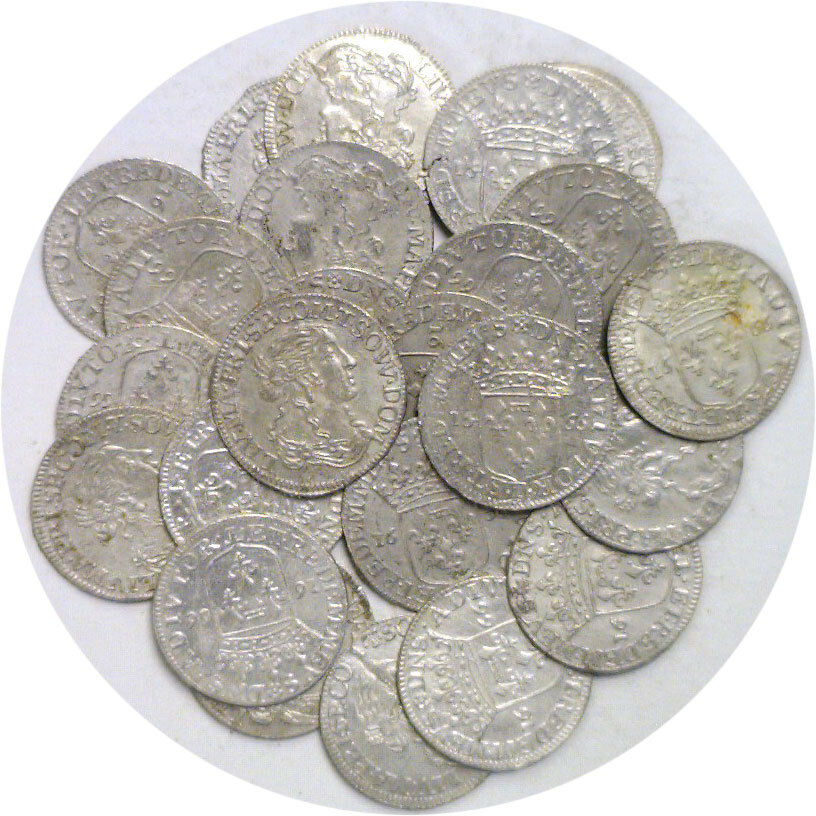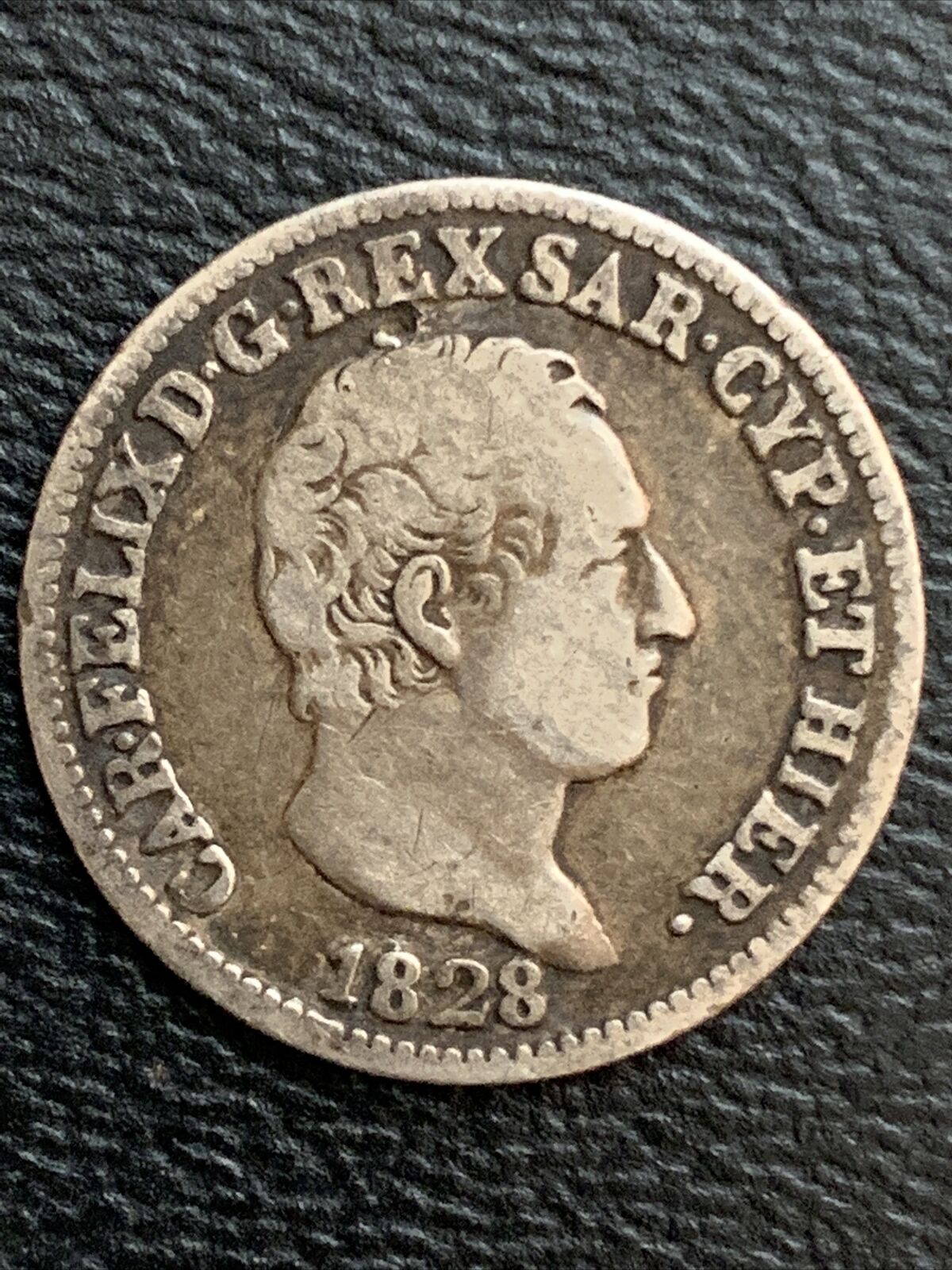-40%
1834, Vatican, Pope Gregory XVI. Silver 50 Baiocchi (½ Scudo) Coin. NGC AU-58!
$ 193.06
- Description
- Size Guide
Description
CoinWorldTV1834, Vatican, Pope Gregory XVI. Silver 50 Baiocchi (½ Scudo) Coin. NGC AU-58!
Honoring St. Romuald, founder of the Camaldolese Order!
Mint Place: Rome (R)
Reference: KM-1316.
R!
Mint Year: 1834 (AN IV)
Denominations: 50 Bacocchi (1/2 Scudo)
Condition:
Certified and graded by NGC as AU-58!
Material: Silver (.917)
Weight: 13.10gm
Diameter: 32mm
Reverse:
Bust of Pope Gregory XVI right, wearing zucchetto, mozetta, and stole.
Legend: GREGORIVS . XVI - PONT . MAX . A . IV
Exergue: 1834 (N. CERBARA)
Obverse:
Nimbate Saint Romuald kneeled, holding cross in left hand. To his right skull and stick on a stone. A new branch thriving from old broken tree in background.
Legend: S . ROMVALDVS . AB . CAMAL .
Exergue: BAJ . B . 50
Saint Romuald
(c. 951- traditionally 19 June, c. 1025/27) nwas the founder of the Camaldolese order and a major figure in the eleventh-century "Renaissance of eremitical asceticism".
According to the vita by Peter Damian, written about fifteen years after Romuald's death, Romuald was born in Ravenna, in northeastern Italy, to the aristocratic Onesti family. As a youth, according to early accounts, Romuald indulged in the pleasures and sins of the world common to a tenth-century nobleman. After watching his father, Sergius, kill an opponent in a duel, however, the 20-year old Romuald was devastated, and fled to the Abbey of Sant'Apollinare in Classe. After some indecision, Romuald became a monk there. Led by a desire for a stricter way of life than he found in that community, three years later he withdrew to become a hermit on a remote island in the region, accompanied solely by an older monk, Marinus, who served as his spiritual master.
Apparently having gained a reputation for holiness, the chief magistrate of Venice (the Doge of Venice), Pietro I Orseolo, accepted his advice to become a monk, abdicated his office, and fled in the night to Catalonia to take the monastic habit. Romuald and his companion, Marinus, accompanied him there, establishing a hermitage near the Abbey of Saint-Michel-de-Cuxa, in southwestern France, which Orseolo entered.
In his youth Romuald became acquainted with the three major schools of western monastic tradition. Sant'Apollinare in Classe was a traditional Benedictine monastery under the influence of the Cluniac reforms. Marinus followed a much harsher, ascetic and solitary lifestyle, which was originally of Irish eremitic origins. The abbot of Sant Miguel de Cuxa, Guarinus, had also begun reforms but mainly built upon the Christian tradition of Iberia. Romuald was able to integrate these different traditions and establish his own monastic order. The admonition in his rule Empty yourself completely and sit waiting places him in relation to the long Christian history of intellectual stillness and interior passivity in meditation also reflected in quietism and in the nearly contemporary Byzantine ascetical practice known as Hesychasm.
A friend of the Holy Roman Emperor Otto III, Romuald was persuaded by him to take the office of abbot of an ancient monastery to help bring about a more dedicated way of life there. The monks, however, resisted his reforms, eventually causing Romuald to resign his office, hurling his abbot's staff at Otto's feet in total frustration. He then again withdrew to the hermit life. He was drawn, though, throughout his long life to help in the establishment of monasteries and hermitages throughout Italy. The most prominent of these are the hermitages of Fonte Avellana (around 1012) and Camaldoli (around 1023), both located in Tuscany, where Romuald's daunting charisma awed Rainerius, marquis of Tuscany, who was neither able to face Romuald nor to send him away. Romauld founded several other monasteries, including the monastery of Val di Castro, where he died in 1027.
Romuald's feast day was not included in the Tridentine Calendar. It was added in 1594 for celebration on 19 June, the date of his death--his birth to heaven--but in the following year it was transferred by Pope Clement VIII to 7 February, the anniversary of the transfer of his relics to Fabriano in 1481. In 1969 it was returned to the anniversary of his death. Some continue to observe one or other of the 1595-1969 calendars.
Authenticity unconditionally guaranteed.
Bid with confidence!
Pope Gregory XVI
(18 September 1765 - 1 June 1846), born
Bartolomeo Alberto Cappellari
, named
Mauro
as a member of the religious order of the Camaldolese, was Pope of the Catholic Church from 1831 to 1846. Strongly conservative and traditionalist, he opposed democratic and modernising reforms in the Papal States and throughout Europe, seeing them as fronts for revolutionary leftism, and sought to strengthen the religious and political authority of the papacy (see Ultramontanism).
Cappellari was born at Belluno on 18 September 1765 to a noble family. At an early age he joined the order of the Camaldolese (part of the Benedictine monastic family) and entered the Monastery of San Michele di Murano, near Venice. As a Camaldolese monk, Cappellari rapidly gained distinction for his theological and linguistic skills. His first appearance before a wider public was in 1799, when he published against the Italian Jansenists a controversial work entitled II Trionfo della Santa Sede, which, besides passing through several editions in Italy, has been translated into several European languages. In 1800 he became a member of the Academy of the Catholic Religion, founded by Pope Pius VII (1800-23), to which he contributed a number of memoirs on theological and philosophical questions, and in 1805 was made abbot of San Gregorio on the Caelian Hill.
When Pius VII was carried off from Rome in 1809, Cappellari withdrew to Murano, near Venice, and in 1814, with some other members of his order, he moved again, this time to Padua; but soon after the restoration of the Pope in 1814 he was recalled to Rome, where he received successive appointments as vicar-general of the Camaldolese Order, councillor of the Inquisition, prefect of the Propaganda, and examiner of bishops. In March 1825 he was created Cardinal-Priest of
San Callisto
(
in pectore
) by Pope Leo XII (1823-29), and shortly afterwards was entrusted with an important mission to adjust a concordat regarding the interests of the Catholics of Wallonia in the predominantly Protestant United Kingdom of the Netherlands. He negotiated peace on behalf of Armenian Catholics with the Ottoman Empire. He discouraged Polish revolutionaries who undermined Tsar Nicholas I's efforts to support the Catholic royalist cause in France, by the necessity of diverting troops to Poland.
On 2 February 1831, he was, after sixty-four days of conclave, unexpectedly chosen to succeed Pope Pius VIII (1829-30) in the papal chair. His election was influenced by the fact that the cardinal considered the most likely
papabile
, Giacomo Giustiniani, was vetoed by King Ferdinand VII of Spain. The other major candidates, Emmanuele De Gregorio and Bartolomeo Pacca, had been candidates in the previous conclave. When a deadlock arose between them, the cardinals turned to Cappellari, but it took as many as eighty-three ballots for a decisive result to be obtained.
At the time of election, Cardinal Cappellari was not yet a bishop - the last man to be elected Pope without episcopal consecration. Hence, after his election he was consecrated bishop by Bartolomeo Pacca, Cardinal Bishop of Ostia and Velletri, dean of the Sacred College of Cardinals, with Pier Francesco Galleffi, Cardinal Bishop of Porto e Santa Rufina, sub-dean of the Sacred College of Cardinals, and Tommasso Arezzo, Cardinal Bishop of Sabina, acting as co-consecrators.
The choice of Gregory XVI as his regnal name was influenced by the fact that he had been abbot of San Gregorio monastery on the Coelian Hill for over twenty years. This was the same abbey from which Pope Gregory the Great had dispatched missionaries to England in 596.
The Revolution of 1830 which overthrew the House of Bourbon had just inflicted a severe blow on the Catholic royalist party in France, and almost the first act of the new government there was to seize Ancona, thus throwing Italy, and particularly the Papal States, into an excited condition which seemed to demand strongly defensive measures. In the course of the struggle which ensued, it was more than once necessary to call in Austrian defenders against red-shirted republicans engaged in a terrorist campaign. The conservatives postponed their promised reforms after bombings and assassination attempts. Nor did the replacement of Tommaso Bernetti by Luigi Lambruschini in 1836 mend matters.
Pope Gregory and Cardinal Lambruschini opposed basic technological innovations such as gas lighting and railways, believing that they would promote commerce and increase the power of the bourgeoisie, leading to demands for liberal reforms which would undermine the monarchical power of the Pope over central Italy. Gregory in fact banned railways in the Papal States, calling them
chemins d'enfer
(literally "ways of hell," a play on the French for railroad,
chemin de fer
, literally "iron road"). However, under pressure from the French, Gregory was liberal in forgiving imprisoned revolutionaries, a policy which might have aided the final overthrow of Gregory's successor, Pope Pius IX, as temporal ruler in 1870.
Gregory XVI made great expenditures for defensive, architectural and engineering works, and was a major patron of learning in the hands of Angelo Mai, Giuseppe Mezzofanti, Gaetano Moroni. However, these large expenditures left the Papal States much weaker financially.
The insurrections at Viterbo in 1836, in various parts of the Legations in 1840, at Ravenna in 1843 and Rimini in 1845, were followed by wholesale executions and severe sentences, hard labour or exile; still the Papal States continued to have considerable unrest.
In 1839 Gregory issued an encyclical against slavery,
In Supremo Apostolatus
, and canonized St Veronica Giuliani, an Italian mystic. Gregory died on June 1, 1846.
Only 1$ shipping for each additional item purchased!











